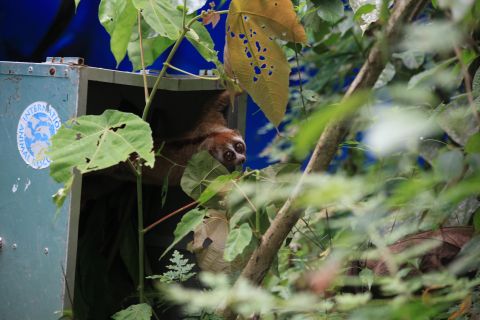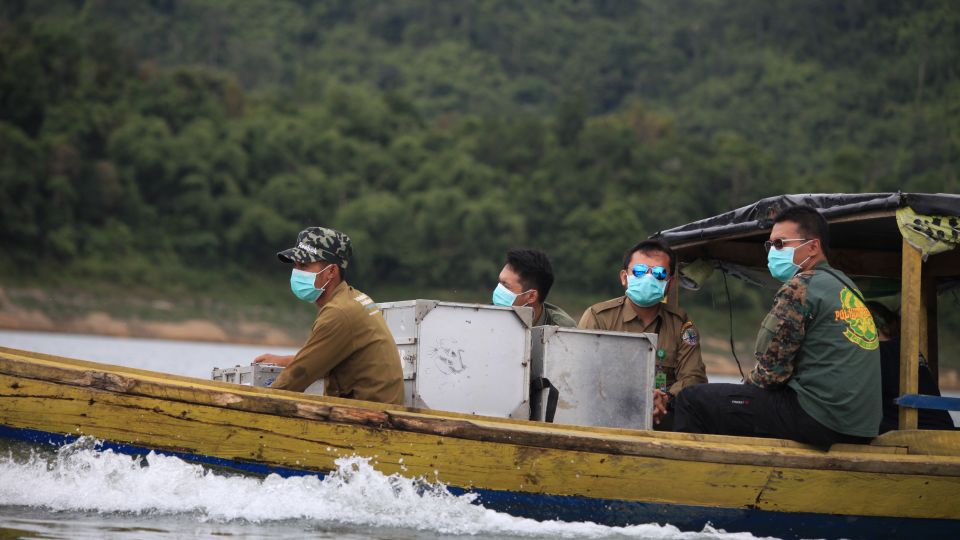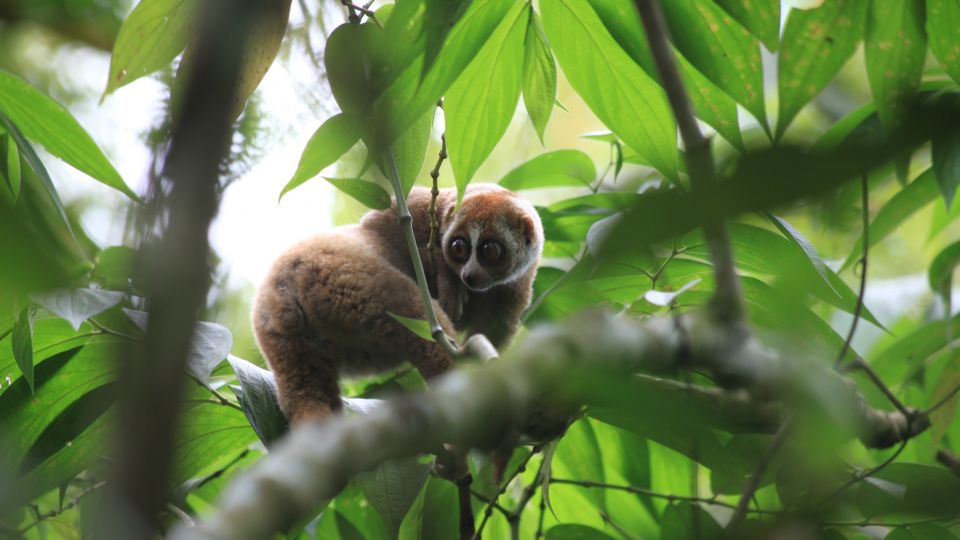
The team at our primate rehabilitation centre in Ciapus, West Java recently carried out the translocation of ten Sumatran slow lorises (nycticebus coucang) for release in the conservation area of Batutegi’s Protected Forest, Tanggamus District, Lampung, Sumatra. The lorises consisted of five males (Justin, Piala, Tea, Usik and Fog) and five females (Rosa, Syifa, Kabut, Keju and Krisik.)
The lorises were confiscated by the Nature Conservation Agency (BKSDA) in West Java in November 2013. They then underwent rehabilitation at IAR’s Primate Rescue and Rehabilitation Centre.
On the night of Sunday, 21 August 2016, the slow lorises were transported from Bogor, West Java to Batutegi in Lampung. The initial stage of the journey took about three hours to Merak Port in Banten, West Java, followed by a sea crossing to Bakauheni Port in Lampung, Sumatra island.

Once they had reached Bakauheni Port, on Monday, 22 August 2016, the lorises’ journey continued to the office of the Conservation of Natural Resources Region III Lampung – Bengkulu. The animals were handed over to Teguh Ismail, the head of the Conservation of Natural Resources Region III Lampung – Bengkulu. Then the team escorted the slow lorises to Batutegi dock, Lampung. From the dock, the team made a one hour boat crossing of the dam to Batutegi Forest. They then continued the journey on foot, crossing rivers and climbing up the hillside to the habituation cage.
On arrival in the habituation area, the transport cages were opened. Two lorises were very shy at first and the vet and animal keepers had to wait patiently for the pair to come out of their cage. Eventually Usik took a first peek out of his cage and surveyed his new surroundings.
Slowly, Usik start to climb a sirihan tree (Piper aduncum) which was growing in the habituation area. He gathered speed as he climbed up the six metre trunk into the leafy branches at the top.

In another area of the habituation enclosure, a team was also waiting for lorises Piala and Syifa to come out of their transport cage. A radio collar (necklace tracker) had been fitted around Piala’s neck. The male lorises had been fitted with trackers to make it easy to monitor them in the wild.
As with Usik, Piala looked very nervous and tentative as he climbed out of the transport cage. Slowly, he started to climb a mara tree (Macaranga tanarius) that was growing in the habituation enclosure. He climbed faster and faster up the tree, twisting his supple body as he moved up the trunk. Eventually Piala reached a height where he was no longer visible in the lush foliage.
The translocation of slow lorises in the area of Batutegi Protected Forest is part of the Sumatra slow loris conservation programme initiated by IAR Indonesia, Lampung’s United Management of Protected Forests (KPHL), and the Conservation Section of the Region of Lampung III from Bengkulu’s Centre for Conservation of Natural Resources (BBKSDA). The Batutegi Protected Forest was chosen as the release site because of its conservation area status which should ensure the safety of the slow lorises from human activities. Additionally, based on the survey by IAR’s team, the area offers an abundance of the necessary vegetation for the slow loris’ food supply. Since 2009, 123 rehabilitated slow lorises have been released in the Batutegi Protected Forest area.

